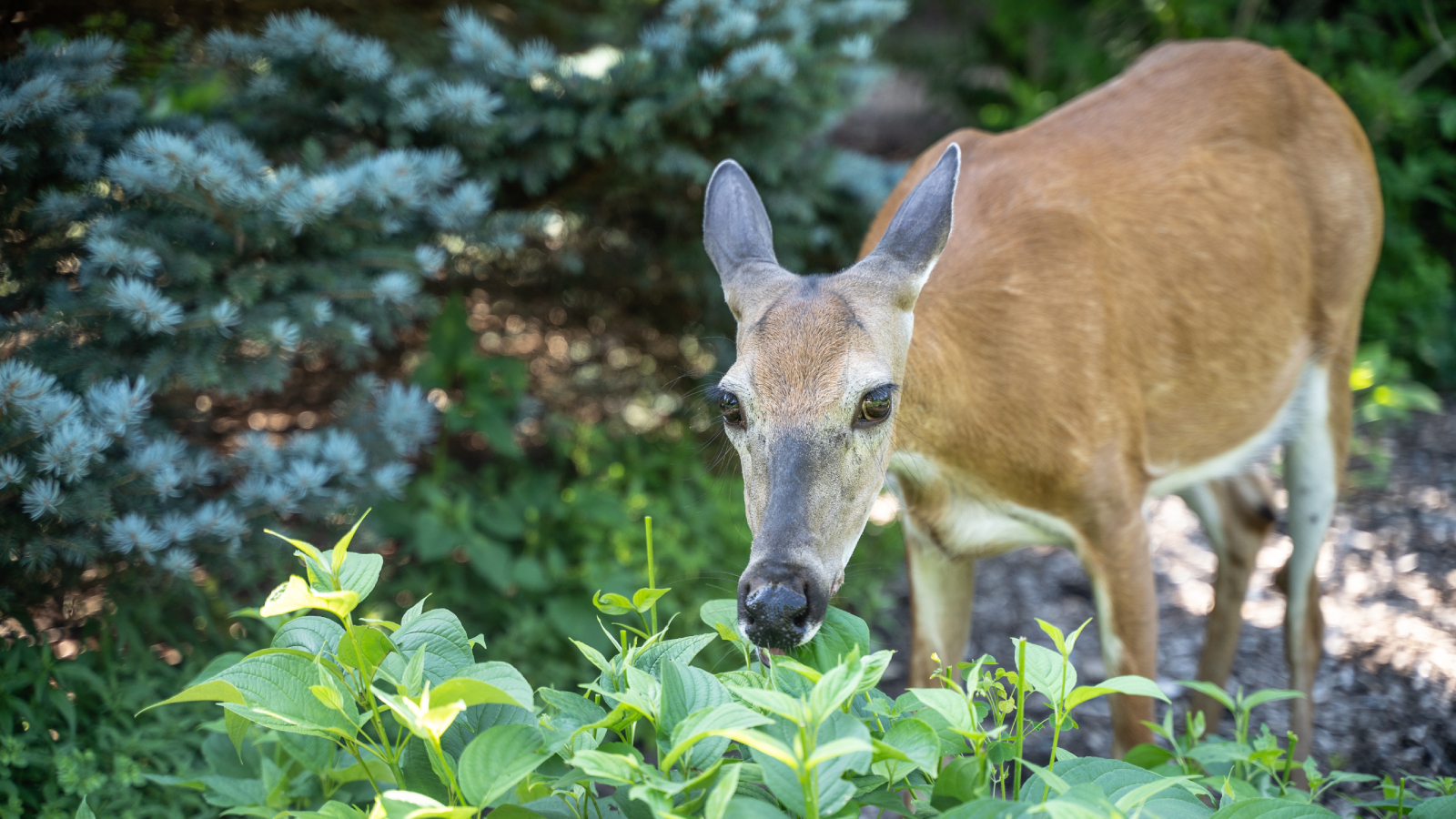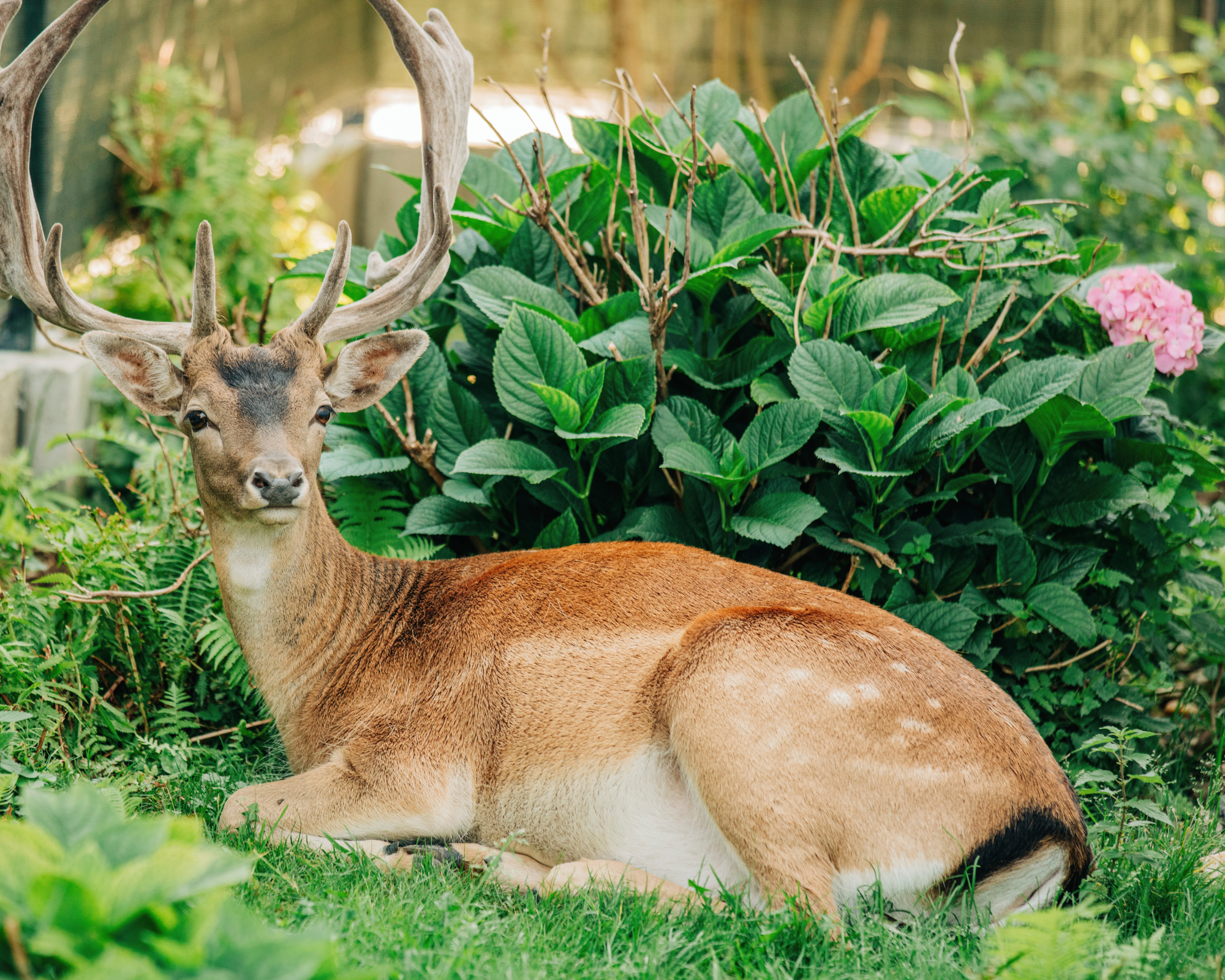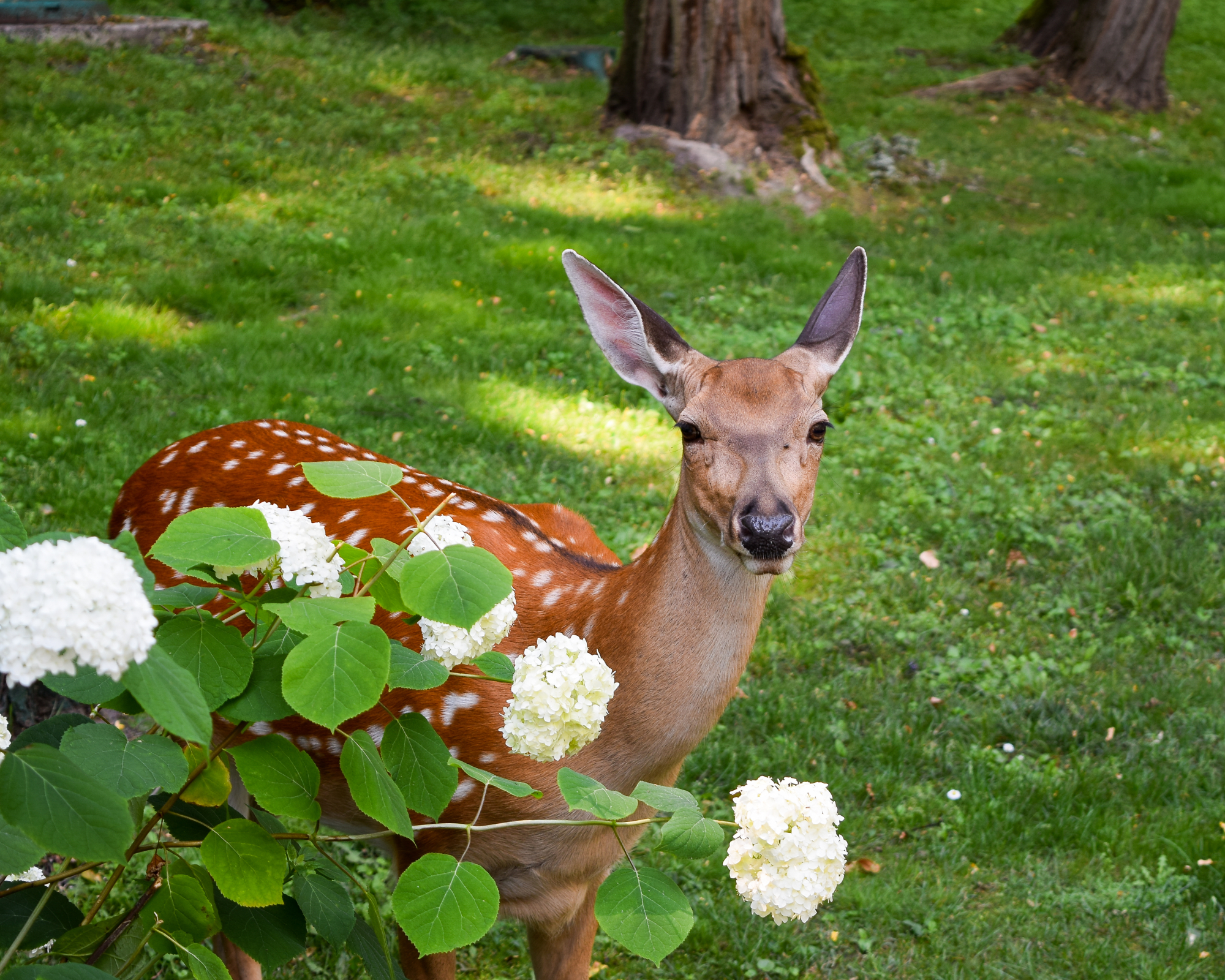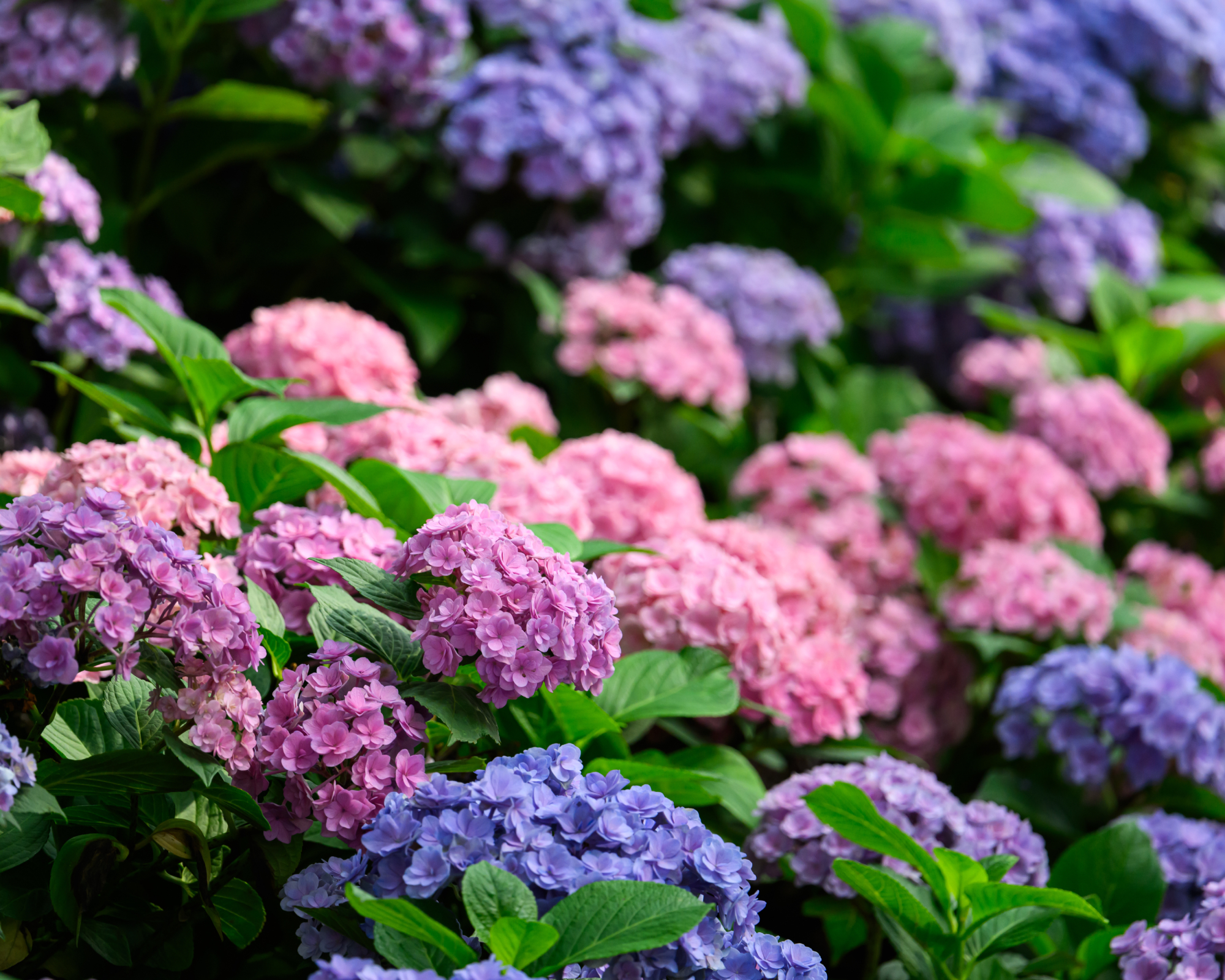Do Deer Eat Hydrangeas? How To Keep Beloved Shrubs Safe From Greedy Grazers
Do deer like hydrangeas? Everything you need to now about deer and hydrangeas, including the best types to plant if you have deer in your area.


Amy Draiss
Hydrangeas are the perfect summer bloom for just about every garden. They can be formal or informal, create hedges or borders, or look gorgeous as specimen plants in a cottage garden or a more modern one.
Growing and caring for hydrangeas is generally easy, but do deer eat hydrangeas? I have found over the years that there is very little that deer won’t at least attempt to eat. Unfortunately, hydrangeas are no exception.
Hydrangea bushes have tender new growth and high moisture content that make them especially appealing to deer. Let's explore what damage deer cause hydrangeas and different varieties of hydrangea that are more deer resistant than others.
Do Deer Eat Hydrangeas?

If you love your hydrangeas as I do, I’m sorry to say that hydrangeas are not on the list of flowering shrubs that are deer resistant. However, some types of hydrangea are less likely to be eaten than others.
That is not to say, however, that in certain circumstances they won’t try. You can't blame the deer. Those tender shoots of new growth are delicious and nutritious, so if food sources are scarce, your hydrangeas are fair game.
How Badly Do Deer Damage Hydrangeas?
If you ask some people or look at some web sources, you may find the comment that deer do not “severely damage” hydrangeas and while this may be true, it isn’t the entire story. People grow hydrangeas for their stunning blooms and unfortunately that’s the part of the plant the deer seem to really gravitate to. So much so that they will even nibble on the buds before the flower has a chance to even open.
This means that yes, technically the hydrangea isn't being severely damaged since the leaves and stems are untouched, but I think the gardener begs to differ, since they are, after all, growing the plant for its blooms.
Sign up for the Gardening Know How newsletter today and receive a free copy of our e-book "How to Grow Delicious Tomatoes".
All that said, there are a few types of hydrangea that are favored and one in particular that just can't get a break from deer browsing.
Which Hydrangeas Do Deer Like Most?

Which varieties are the favorites of deer? Native to North America, the aromatic oakleaf hydrangeas are favored as much by the deer as by you. They will nosh on the newly emerging flower buds as well as the stems. Fortunately in this case, the deer seem to be most attracted to young oakleaf so if you can get the plant to survive for 3 years or so, they will likely back off and search for more tender pickings.
Panicle hydrangea with their glorious branching of blooms is yet another favorite of deer. Generally considered hardy and reliable bloomers, deer also like this variety when the plant is young. When the plant gets larger and woodier, the deer move onto more tender sources; although they will still browse on low hanging blooms and new growth.
The number one hydrangea favored by deer is also the favorite of many gardeners. Loved for its romantic balls of blooms, the smooth hydrangea is not an option for gardeners who get deer visitors. The deer eat not only the flowers but the stems and foliage as well.
Deer Resistant Hydrangea Types
No variety of hydrangea is deer proof, but there are a couple that you could plant and coexist with your hooved friends. The bracted hydrangea appears to be the least interesting to deer. The deer's disinterest may be due to the plant's late blooming. By the time it is in full bloom, it appears there are plenty of other succulent food sources more appealing to the deer.
Another reason for their distaste is likely the fuzzy, soft foliage which apparently isn't to the deer's taste.
Bigleaf, cascade, and mountain hydrangeas are also deer resistant options. They come in second to bracted hydrangea but are still contenders. For whatever reason, maybe the rather tough leaves, the deer are less attracted to these varieties compared to snowflake, panicle, or oakleaf.
Lastly, climbing hydrangeas. The deer will eat the tender flower buds but due to this variety's growth habit, upward, will eventually get too tall. You’re probably safe once your specimen gets to about 6 feet. The climbing hydrangea in the Gardening Know How Shop is a great option for shady and sunny areas. Climbing hydrangeas are notoriously slow growers so, be patient.
How To Keep Deer From Eating Hydrangeas

Beyond planting the more deer resistant varieties of hydrangea, what else can be done about browsing deer? Well, you can protect young hydrangea with netting or deer proof fencing. Of course if you fence, you’re looking at a fence taller than 8 feet and they still might get over it.
You can plant trap crops. The idea here is to plant something that deer love to eat to keep them happy nibbling on rather than your prized hydrangea. Clover is one such “trap” plant.
You can try to instill the element of surprise by installing motion activated sound-making machines or water features.
Wind chimes or socks, whirligigs, air dancers and even pets like dogs can deter deer. Be careful with your precious pets however. A starving deer or a deer in rut can, and likely will, have a go at your pet.
You can try using smell deterrents like predator urine or blood; not yours, a predator like a coyote. These work especially well in dry climates where rain doesn't dilute the aroma. Some dog owners even collect their pet's hair, put it in mesh bags, and hang it near areas they want deer to be repelled.
Frequently Asked Questions
Do deer eat limelight hydrangeas?
Yes, limelight hydrangeas are a panicle variety and a particular favorite of deer.
Which hydrangea is most deer resistant?
Given the opportunity, especially when food is scarce, deer will go for any type of hydrangea. However, smooth hydrangeas are by far their favorite. They not only nibble on flowers and buds, but stems and leaves as well.
This article features products available from third party vendors on the Gardening Know How Shop. Keep in mind that our plant inventory is limited - so if you’re thinking of purchasing, don’t wait!

Amy Grant has been gardening for 30 years and writing for 15. A professional chef and caterer, Amy's area of expertise is culinary gardening.
- Amy DraissDigital Community Manager
